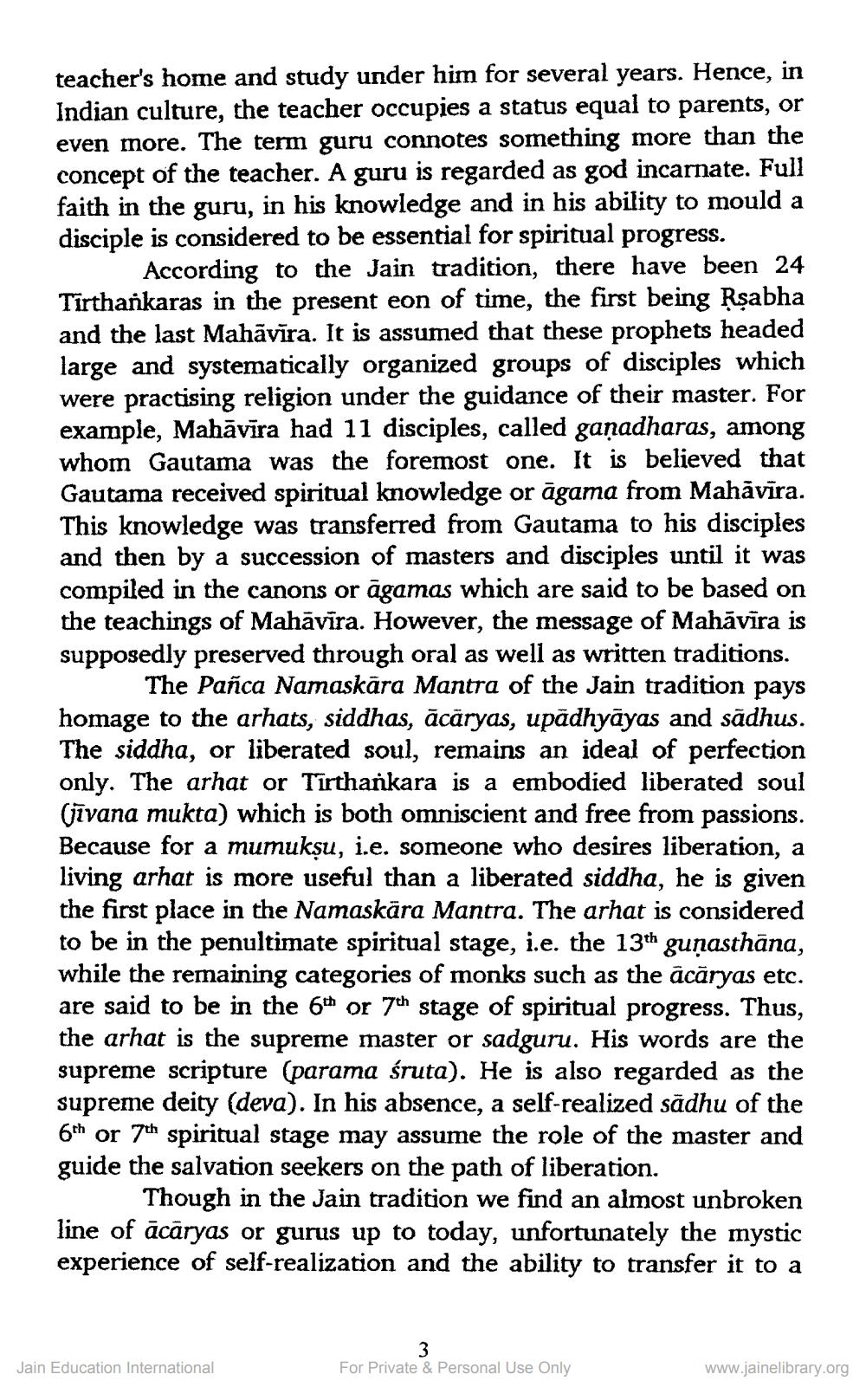________________
teacher's home and study under him for several years. Hence, in Indian culture, the teacher occupies a status equal to parents, or even more. The term guru connotes something more than the concept of the teacher. A guru is regarded as god incarnate. Full faith in the guru, in his knowledge and in his ability to mould a disciple is considered to be essential for spiritual progress.
According to the Jain tradition, there have been 24 Tirthankaras in the present eon of time, the first being Rşabha and the last Mahāvīra. It is assumed that these prophets headed large and systematically organized groups of disciples which were practising religion under the guidance of their master. For example, Mahāvīra had 11 disciples, called ganadharas, among whom Gautama was the foremost one. It is believed that Gautama received spiritual knowledge or āgama from Mahāvīra. This knowledge was transferred from Gautama to his disciples and then by a succession of masters and disciples until it was compiled in the canons or āgamas which are said to be based on the teachings of Mahāvīra. However, the message of Mahāvīra is supposedly preserved through oral as well as written traditions.
The Panca Namaskāra Mantra of the Jain tradition pays homage to the arhats, siddhas, ācāryas, upādhyāyas and sādhus. The siddha, or liberated soul, remains an ideal of perfection only. The arhat or Tirthankara is a embodied liberated soul (jivana mukta) which is both omniscient and free from passions. Because for a mumukṣu, i.e. someone who desires liberation, a living arhat is more useful than a liberated siddha, he is given the first place in the Namaskāra Mantra. The arhat is considered to be in the penultimate spiritual stage, i.e. the 13th guṇasthāna, while the remaining categories of monks such as the acāryas etc. are said to be in the 6th or 7th stage of spiritual progress. Thus, the arhat is the supreme master or sadguru. His words are the supreme scripture (parama śruta). He is also regarded as the supreme deity (deva). In his absence, a self-realized sādhu of the 6th or 7th spiritual stage may assume the role of the master and guide the salvation seekers on the path of liberation.
Though in the Jain tradition we find an almost unbroken line of ācāryas or gurus up to today, unfortunately the mystic experience of self-realization and the ability to transfer it to a
Jain Education International
For Private & Personal Use Only
www.jainelibrary.org




